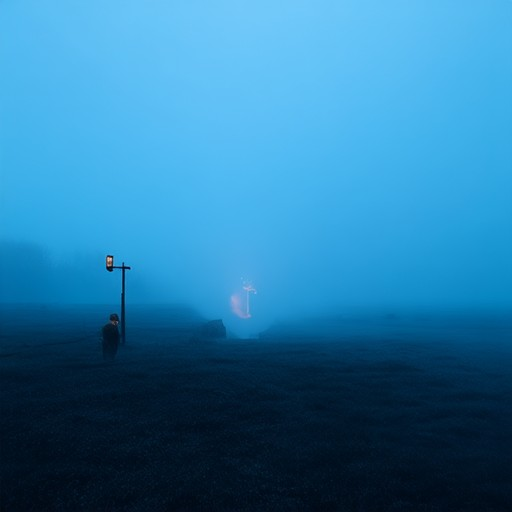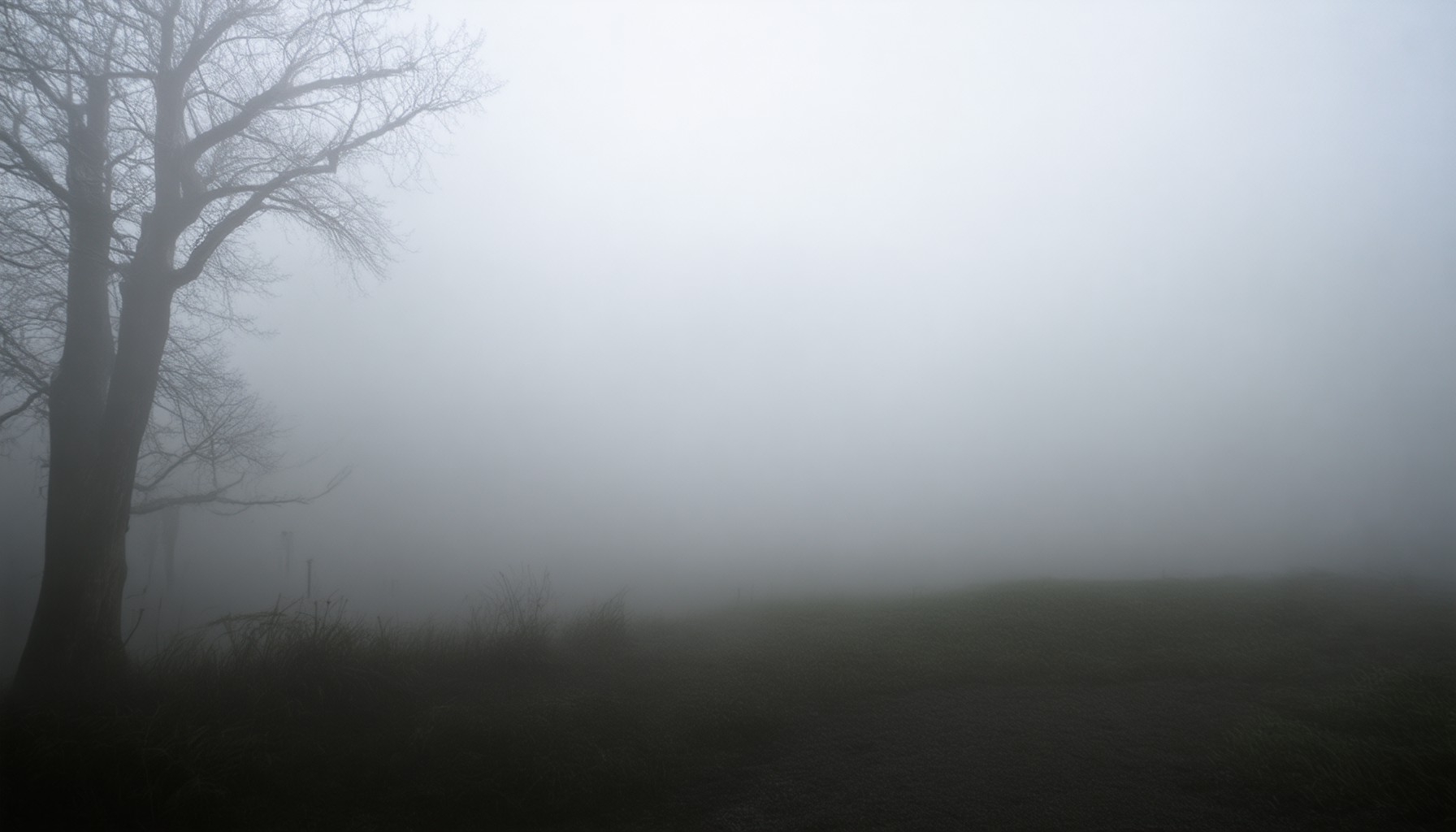Fog is often more than just a weather phenomenon; it carries layers of symbolism and storytelling potential. In the realm of myth and literature, the themes surrounding fog are rich and multifaceted, offering insights into human psychology, cultural values, and the essence of storytelling itself. From the eerie presence that shrouds ghostly encounters to the moral dilemmas posed by the fog horn’s existence, this exploration delves into the deeper meanings hidden within the mist. By examining the symbolic representations of fog, its impact on human perception, and the tales it weaves, we uncover a world where fog is not merely a natural element but a catalyst for reflection and imagination.

The Theme of “The Fog”
The theme of “The Fog” centers around the mysterious and dangerous mist that envelops the coastal town of Santa Clara, California. The fog is not just a physical presence but a supernatural force that brings chaos and destruction. It serves as a metaphor for the unpredictability of nature and the potential dangers lurking in the environment. The film explores themes of isolation, survival, and the struggle against an overwhelming, incomprehensible force.
The fog represents both a literal environmental hazard and a symbolic element of horror, as it gradually consumes the town and its inhabitants. It challenges the characters’ understanding of reality and their ability to survive in the face of an unknown threat. The film also touches upon historical events, such as the “Fog of Death” in 1952 London, adding a layer of tragic consequence to the story.
Ultimately, “The Fog” is a tale of confrontation between humanity and an ancient, malevolent force that defies explanation, leaving the characters to grapple with their fears and the limits of their own courage.
The Symbolism of Fog
Fog is a multifaceted symbol that carries various interpretations across different contexts. Its significance often depends on the setting and the narrative it’s used in.
- Mystery and Confusion : Fog frequently symbolizes mystery or confusion. It creates an atmosphere of obscurity, where details are obscured, and truths remain elusive. This symbolism is often used in suspenseful or mysterious scenes to heighten tension and intrigue.
- The Past : In some literary works, fog represents the past. It can symbolize forgotten memories or historical events that are difficult to recall. The thickness of the fog may reflect the weight of the past, suggesting that certain truths are buried and require digging to uncover.
- Concealment and Secrecy : Fog can also symbolize concealment. It hides what is beneath its cover, making it a fitting metaphor for secrecy or hidden motives. Characters may gather under the veil of fog to discuss covert operations or keep their true intentions hidden.
- Transformation : In certain contexts, fog signifies transformation. It can alter the appearance of landscapes or individuals, turning familiar places into strange ones. This duality mirrors the concept of change, where the familiar becomes unfamiliar, representing transitions or unexpected shifts in life.
- Isolation and Solitude : Fog can create a sense of isolation, as visibility is reduced, and connections to the outside world are lost. This symbolism may highlight feelings of loneliness or existential crises, where individuals find themselves disoriented and disconnected from their surroundings.
- Endings and Transitions : In some narratives, fog marks the end of a journey or a significant chapter. It can signal a transition, where characters confront their final challenges before moving on to what lies next. This use of fog often ties into themes of closure and renewal.
Overall, fog’s symbolism is rich and adaptable, allowing it to convey a variety of emotions and concepts depending on the story’s needs. Its presence can deepen the narrative’s meaning, providing layers of interpretation for readers to explore.

The Theme of Ghosts in the Fog
The theme of “Ghosts in the Fog” explores the concept of unresolved trauma and its lingering effects on individuals and society. This metaphorical phrase suggests that certain events, particularly those involving significant loss or conflict, continue to haunt us collectively, shaping our collective consciousness and behavior.
Historical Context
The phrase “Ghosts in the Fog” often arises in discussions about historical events marked by tragedy, such as wars or disasters. These ghosts represent the untold stories, the lives lost, and the collective guilt or trauma that persist long after the event itself. They serve as reminders of humanity’s capacity for destruction and the enduring impact of past actions.
Psychological Impact
On a personal level, “Ghosts in the Fog” can refer to the internal struggles of individuals who carry the weight of past experiences. These spectral figures symbolize the unresolved conflicts, regrets, or traumas that continue to influence one’s present life. They highlight the psychological burden carried by survivors or participants in traumatic events, showing how such experiences can shape one’s identity and relationships.
Symbolic Meaning
Symbolically, “Ghosts in the Fog” represents the unseen forces that drive societal changes. These spectral entities embody the unaddressed issues that linger in the collective consciousness, influencing decisions and behaviors. They suggest that progress and healing are often hindered by the inability to confront these lingering influences.
Societal Implications
At a societal level, “Ghosts in the Fog” underscores the importance of addressing historical wrongdoings and seeking reconciliation. It challenges societies to confront their pasts, acknowledge their mistakes, and work toward a more equitable future. By exorcising these spectral influences, communities can move forward, creating a more informed and empathetic collective memory.
In essence, “Ghosts in the Fog” serves as a powerful metaphor for understanding the multifaceted nature of trauma and its impact on individuals and societies. It encourages reflection on history, psychology, and the ongoing struggle for justice and healing.

Themes in “The Fog Horn”
“The Fog Horn” explores several profound themes through its narrative and setting. Here’s a breakdown of the primary themes:
- Loneliness :
The story delves deeply into the emotional isolation experienced by the lighthouse keeper, Bixler, and his wife, Lucille. Despite living together, they feel disconnected, highlighting the theme of loneliness even in close proximity. This sense of isolation is further amplified by the misty environment, which wraps the island in a shroud of mystery, making human connection seem impossible. - Isolation :
The setting of the story—a remote lighthouse on a desolate island—is central to the theme of isolation. The characters are physically separated from the outside world, and their attempts to escape the fog or reach civilization are futile. This emphasizes how isolation can lead to madness and existential despair. - Existential Contemplation :
The recurring motif of the fog symbolizes uncertainty and the unknown. It forces the characters to confront their fears, doubts, and mortality. The lighthouse itself becomes a metaphor for human endeavor, shining light into the darkness but ultimately unable to alter the inevitable. - Loss of Control :
The characters struggle against the overwhelming power of nature, represented by the relentless fog. This theme underscores humanity’s vulnerability in the face of the natural world and the futility of trying to control events beyond our comprehension.
These themes collectively create a haunting exploration of human existence, leaving readers to reflect on their own fears and uncertainties.
The Moral of “Fog Horn”
“Fog Horn,” a short story by Ray Bradbury, delves into themes of isolation, technology, and the consequences of alienation. The story centers on McDunn, a lighthouse keeper on a remote island, and his interactions with a mysterious sea creature known as the “Fog Horn.” Through these encounters, Bradbury explores the impact of technological advancements on human relationships and emotional well-being.
The primary moral of the story lies in its critique of modernity’s disconnection from essential human experiences. McDunn’s role, though vital, becomes mechanized, reducing him to a mere functionary. This dehumanization leads to his emotional detachment and eventual destruction of the fog horn, which symbolizes both maritime safety and his connection to a more primitive, instinctual part of himself.
The story serves as a cautionary tale about the potential consequences of prioritizing technology over human empathy and connection. It underscores the importance of preserving humanity’s capacity for emotion and relationship-building in an increasingly automated world.
By examining McDunn’s journey, Bradbury highlights the dangers of isolating oneself through resentment and anger, emphasizing the need for balance between technological progress and the preservation of human nature.

The Symbolism in “The Fog Horn”
The foghorn serves as a central symbol in the story, representing both the presence of the monster and the haunting atmosphere of the town. Its deep, resonant sound echoes through the night, awakening the monster and striking fear into the hearts of the townspeople. The foghorn’s cry is a recurring motif, symbolizing the unknowable and terrifying force that threatens the community.
The lighthouse, on the other hand, symbolizes Johnny’s isolation and his struggle with companionship. Moving into the lighthouse, Johnny retreats from the world, choosing solitude over human interaction. The beacon of light from the tower reflects his attempt to find clarity and purpose in his life, yet it ultimately becomes a source of his own loneliness.
Additionally, the persistent fog shrouding the town and the surrounding sea contributes to the sense of mystery and dread. It obscures vision, symbolizing the inability of the townspeople to see the true danger approaching, much like the invisible monster lurking among them.
These symbols collectively convey themes of isolation, fear, and the unknown, reinforcing the story’s chilling atmosphere and the townspeople’s precarious situation.




0 Comments